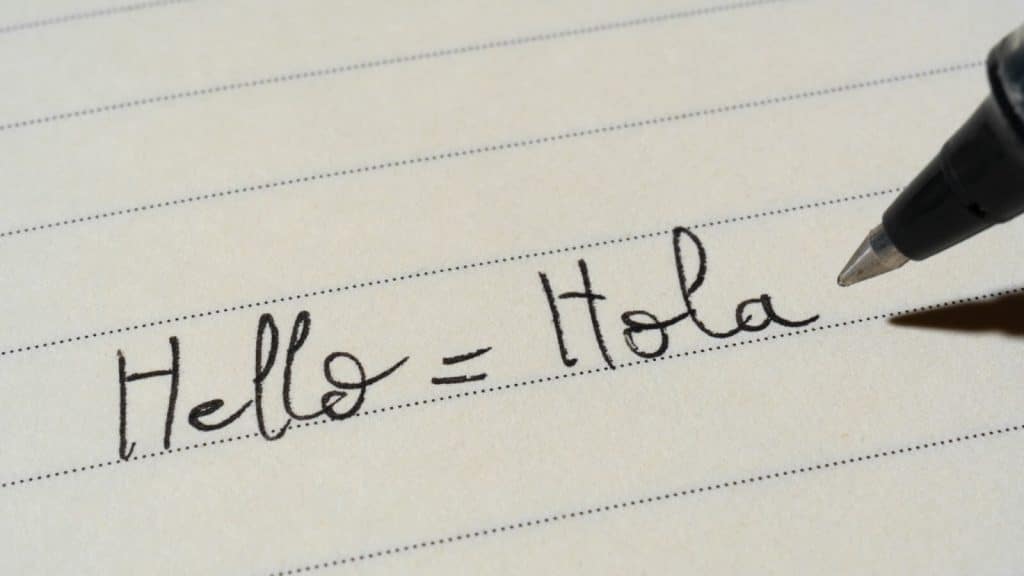The United States is one of the biggest countries in the world, which is why it shouldn’t come as a surprise that people of different cultures and speaking different languages live there. In fact, it is one of the reasons why the US is often referred to as a ‘melting pot’ – a place where a variety of cultures and ideas co-exist together, often combining and producing new ones.
Although the US doesn’t have an official language at the federal level, English is the most commonly spoken one, with Spanish being a close second. But have you ever wondered how many Americans actually speak Spanish? If you have, you will find the answer to that below.
Spanish Speakers in the US – The Statistics
Let’s start with some statistics. The United States has a population of over 336 million people, which makes it the third biggest country in the world based on population, right after India and China. Out of those people, it is estimated that 53 million speak Spanish – with roughly 41 million being native Spanish speakers and almost 12 million being bilingual.
To put into perspective how big that number is, countries like Spain or Colombia, in which Spanish is the official language, have less population than that – Spain has about 47 million residents, while Colombia has about 51 million people.
Also, there are more Spanish speakers in the United States than any other language aside from English. If you combine speakers of French, Hawaiian, as well as numerous Native American languages, the number of speakers will still be lower than that of Spanish-speaking residents.
What’s more, it is said that by 2050, the number of Spanish speakers in the United States will triple, making it the largest Spanish-speaking population in the world.
Top 10 States in Which Spanish Is Spoken
The number of Spanish speakers differs depending on the state you’re in – in some states, there are fewer people using this language, while in others, the number is higher. So, let’s take a look at the top 10 states in which Spanish is used:
- Texas – in Texas, almost 30% of the population speaks Spanish, which equals about 8 million people
- California – about 28% of the population in California speaks Spanish, which is about 10 million residents
- New Mexico – almost 550,000 residents of New Mexico speak Spanish, which makes up about 28% of the population
- Nevada – in Nevada, over 560,000 people speak Spanish, which equals about 21% of the total population
- Florida – almost 4 million residents of Florida speak Spanish, which makes up about 20.9% of the population
- Arizona – in Arizona, over 20% of the population speaks Spanish, which is about 1.3 million people
- New Jersey – there are 1.34 million Spanish speakers in New Jersey, which makes up about 15.9% of the population
- New York – in New York, about 2.8 million people are Spanish speakers, which equals 15% of the population
- Illinois – there are about 1.6 million Spanish-speaking people in Illinois, which is about 13.2 % of the total population
- Colorado – almost 600,000 residents of Colorado speak Spanish, which makes up about 12% of the population
The Spanish Language

Despite the fact that the English language could be considered to be lingua franca (language that is used by people whose native languages are different), Spanish actually has more native speakers, which makes it the second most spoken language in the world – English has over 370 million native speakers, while Spanish has about 100 million more.
Just like English, Spanish also has different varieties – there is Latin American Spanish, which consists of, for example, Mexican Spanish, Argentinian Spanish, Chilean Spanish, Colombian Spanish, and more, and there is also European Spanish, which is simply the language spoken in Spain.
And although they are similar, there are certain differences between them, such as the vocabulary used. The most common examples would probably be ‘ordenador’ and ‘computadora’ or ‘teléfono móvil’ and ‘cellular.’ Spanish speakers in Latin America prefer ‘cellular’ and ‘computadora,’ while European Spanish speakers use ‘teléfono móvil’ and ‘ordenador.’
The Spanish Language in the US
As was already mentioned – while Spanish is not an official language in the US (mainly because they don’t have an official language), it is the most spoken foreign language in the country. There is one US territory that established Spanish as its official language, and that is Puerto Rico.
The Spanish prevalence cannot be denied, especially if we consider the fact that it is the most widely taught non-English language in secondary schools and higher education. There are also many newspapers, weekly editions, and radio stations for Spanish speakers.
Many of the speeches delivered by high-rank politicians have an available Spanish translation, and the official government website Whitehouse.gov has a Spanish language version. If a politician is fluent in Spanish and has to deliver a speech to Hispanic majority constituencies, they will likely do it in Spanish rather than in English.
Finally, it isn’t uncommon to see labels with information written on them in three languages – English, Spanish and French, although this is more due to the North American Free Trade Agreement (NAFTA).
The Bottom Line
Although most people in the United States speak English, there is no official language. However, if there were, there would be two – English and Spanish, and looking at the numbers above, you probably understand why.
However, while numbers are one thing, the importance of Spanish can be seen in people’s everyday life. Many children and young adults are learning Spanish in school. There are newspapers and radio stations in Spanish. The White House’s website has a Spanish-language version. Some labels have information in Spanish on them. The examples could go on and on.
All in all, it is pretty clear that Spanish is a significant language when it comes to the US.
If you have ever wondered how many Spanish speakers there actually are in the United States, hopefully, this article answered your question. And if you want to learn more interesting facts about languages around the world (and trust us when we tell you that there are plenty), you can always check out our blog section.


